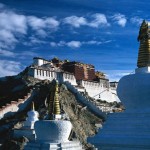
Within this spectacular geography is also one of the richest cultural landscapes anywhere. The country is a potpourri of ethnic groups and sub-groups who speak over 93 languages and dialects. Nepal offers an astonishing diversity of sightseeing attractions and adventure opportunities found nowhere else on earth. And you can join in the numerous annual festivals that are celebrated throughout the year in traditional style highlighting enduring customs and beliefs.
Language: Nepali
Currency: Nepalese Rupee
National Bird: Impean Peasant (Danfe).
National Flower: Rhododendron Arboreum (Lali Gurans).
The most exhilarating titles with which Nepal has been admired and praised by various renowned travel writers in recognition of her cultural richness :
- Living cultural Museum
- Shangri-La
- Roof of the World
- Birth place of the Apostle of Peace
- Country of Living Goddess
- City of Golden Pagodas and Parasols
- Mystical Kingdom
- Land of Mysticism & Exoticism
- Land of festivals
Nepal is located in South Asia between China in the north and India in the south, east and west. While the total land area is 147,181 sq. km including water area of the country that is 3,830 sq. km. Nepal falls in the temperate zone north of the Tropic of Cancer. Nepal’s ecological zones run east to west about 800 km along its Himalayan axis, 150 to 250 km north to south, and are vertically intersected by the river systems. The country can be divided into three main geographical regions: Himalayan region, mid hill region and Terai region. The highest point in the country is Mt. Everest (8,848 m) while the lowest point is in the Terai plains of Kechana Kalan in Jhapa (60 m).
Nepal’s 20 protected areas cover 23.23 percent of its land. Its 10 national parks, three wildlife reserves, six conservations areas and one hunting reserve cover various geographical locations from the sub-tropical Terai jungles to the arctic Himalayan region. Two of Nepal’s natural areas are listed by UNESCO as Natural World Heritage Sites. They are: Chitwan National Park and Sagarmatha National Park. Comprising only 0.1 percent of the total land area on a global scale, Nepal possesses a disproportionately rich biodiversity.
Of the total number of species found globally, Nepal possesses 2.80 percent plants, 3.96 percent mammals, 3.72 percent butterflies and 8.9 percent of birds. Of 6,391 species of flowering plants recorded in Nepal, 399 are endemic. Among the 399 endemic flowering plants in Nepal, 63 percent are from the high mountains, 38 percent from the mid hills, and 5 percent from the Terai and Siwaliks.
Similarly, the central region contains 66 percent of the total endemic species followed by western (32 percent) and
eastern regions (29 percent). Nepal’s wildlife belong to the Palaearctic and Indo-Malayan realms. The 136 ecosystems is confined to 11 bio-climatic zones and 9 eco-regions that are defined by ecological features, climate and plant and animal communities. The endemic fauna are: Himalayan field mouse, spiny babbler, Nepali kalij, 14 herpetofauna, and six types of fishes. Wildlife also include like endangered animals like the Royal Bengal tiger and the one-horned rhinoceros. Nepal is home 850 species of birds and more than half of these are found in the Kathmandu Valley.
The natural resources of Nepal are water, hydropower, scenic beauty, quartz, timber, lignite, copper, cobalt and iron ore. Vast expanse of land in the country is used for agriculture with about 16 percent of total arable land.
The population of Nepal was recorded to be about 26.62 million according to a recent survey done by the Central Bureau of Statistics, Nepal. The population comprises of about a 101 ethnic groups speaking over 92 languages. The distinction in caste and ethnicity is understood more easily with a view of customary layout of the population. Though, there exist numerous dialects, the language of unification is the national language, Nepali. Nepali is the official language of the state, spoken and understood by majority of the population. Multiple ethnic groups have their own mother tongues. English is spoken by many in Government and business offices. It is the mode of education in most private schools of Kathmandu and some other cities.
Nepal was declared a secular country by the Parliament on May 18, 2006. Religions practiced in Nepal are: Hinduism, Buddhism, Islam, Christianity, Jainism, Sikhism, Bon, ancestor worship and animism. The majority of Nepalese are either Hindus or Buddhism. The two have co-existed in harmony through centuries.
Authentic Nepali taste is found in Newari and Thakai cuisines. Most Nepalis do not use cutlery but eat with their right hand.The regular Nepali meal is dal (lentil soup), bhat (boiled rice) and tarkari (curried vegetables), often accompanied by achar (pickle). Curried meat is very popular, but is saved for special occasions, as it is relatively more expensive. Momos (steamed or fried dumplings) deserve a mention as one of the most popular snack among Nepalis. Rotis (flat bread) and dhedo (boiled flour) also make meals in some homes.
Know more about
-
Geography
The altitude of this region ranges between 4877 meters and 8848 meters with the now line runnin...
-
History
Nepal has seen many rulers and ruling dynasties. The earliest rulers were the Kirantis who rule...
-
Nature
The Kingdom of Nepal covers an area of 147,181 square kilometers, and stretches 145-241 kilomet...
-
People & Culture
The population of Nepal is about 26 million. Eighty-six percent of Nepalis follow Hinduism, whi...
-
Religion
In Nepal , Hinduism and Buddhism are the two main religions. The two have co-existed down the a...





 Español
Español
